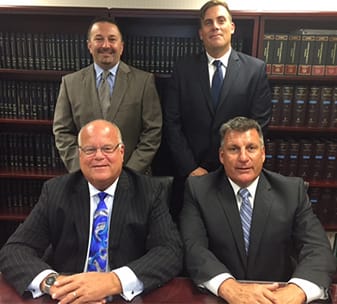Shielding Assets And Shedding Debt: Bankruptcy In New York
Think of bankruptcy as a shield, protecting your financial assets and wiping out most of your bills that you can no longer to afford to pay. The purpose of filing bankruptcy is to help you resolve, reorganize and rebuild your finances from the ground up, so that you can obtain a fresh start, and eliminate crushing financial burdens.
If you are thinking about filing for bankruptcy in New York, you should understand the insolvency process, review your assets, understand what assets are exempt and protected from your creditors, and prepare for a fresh start.
Bankruptcy Basics
Historically, many people have filed for bankruptcy as a result of divorce, loss of job, experiencing daunting medical bills due to illness or following the death of a spouse where family income has been drastically reduced. There are, however, many other reasons why people file bankruptcy. For example, people who are retired; carry high-interest credit card debts; and are overwhelmed with mortgages far beyond the value of the property may choose bankruptcy to alleviate their mounting debts.
Most consumers file for either Chapter 13 or Chapter 7 debt protection. Chapter 13 is often utilized to stop foreclosure and save their home by paying arrears over time. It is also used to stop wage garnishments caused by non-dischargeable debts such as past due child support/maintenance, non-dischargeable tax obligations and student loan obligations and to prevent automobile repossessions. Chapter 13 allows people who are over their heads in debt to repay their creditors according to a negotiated plan, which provides for a 3 to 5 year payout term. Chapter 7 is often utilized by individuals who are substantially current on their mortgage obligation and other secured debt but have an overwhelming amount of other liabilities, even though their assets are exempt under New York State law. Chapter 7 allows people to discharge their debts while preserving allowable exempt assets. In the current economy, bankruptcies are again on the rise.
Current Conditions
According to Automated Access to Court Electronic Records (AACER), consumer bankruptcy filings in the U.S. increased 32 percent from 2008 to 2009. The number of filings went from 1.1 million two years ago to 1.4 million last year. Bankruptcy is often referred to as a trailing indicator, so even as the economy begins to recover and unemployment declines, bankruptcy filings will continue to rise as people exhaust their resources.
Recent AACER data indicates that 56,927 people opted for insolvency proceedings in 2009, which is 23 percent more than 46,202 filings in 2008. Most of these filed bankruptcies were Chapter 7 cases, so it is critical for people to understand what property is exempt (protected) in New York from the reach of creditors in a bankruptcy proceeding.
New York Exemptions
Exemptions are the type and amount of personal property that is protected and not subject to risk of loss in a bankruptcy proceeding. Even though bankruptcy laws are governed by Federal statutes and case law, each state has the right to opt out of the Federal exemptions and determine its own state exemptions. New York has opted out and exemptions are determined under New York State law.
Common New York exemptions include:
- Homestead exemption – a person can claim an exemption of $165,550.00 of equity in the home. A husband and wife who own a house together may potentially exempt up to $331,100.00 of equity above any mortgage obligation on the house.
- Jewelry, including a wedding ring, watches etc. or art up to $1,100.00 of value.
- The equity in a motor vehicle can be protected up to $4,425.00 per vehicle.
- Household goods and wearing apparel are protected up to $11,025.00.
- Cash exemption for those without a homestead-you can exempt up to $5,525.00 per person plus an additional $1,100.00 towards any personal property bank accounts or cash.
- Pensions, 401Ks, IRA, SEP plans and other ERISA qualified Retirement plan.
- Union annuities and union pension plans.
- Workman’s compensation claims.
- Entitlement to maintenance and support awards.
- Cash surrender value in insurance policies.
- Public benefits such as social security and social security disability.
Alternatively, residents of New York State can asserts Federal Bankruptcy Exemptions, which includes a right to exempt up $11,850 in any other property, including cash, engagement rings, forthcoming tax returns, or any other assets of value.
Fresh Start
In addition to gaining a fresh start in your financial life, there are other benefits filing for bankruptcy in New York. Once a bankruptcy is filed, all harassing collection phone calls are stopped as well as any lawsuits. You can let go of the stress, worry and guilt associated with being unable to pay all of your bills. Best of all, you get to shield many
of your personal assets from the creditors and begin to move forward without the burden of massive debt weighting on your shoulders.
When you have financial problems, bankruptcy should be considered. If you live in New York and you are considering bankruptcy as a possible means of eliminating your debt, contact an experienced bankruptcy attorney. Experienced bankruptcy lawyers will be able to answer your questions and to provide you with information and options. Often times, people are hesitant to consider bankruptcy, and seek other alternatives such as debt consolidation companies that in many instances prolongs rather than reduces the stress of overwhelming debt. Speak to a bankruptcy attorney and look for a better alternative.

